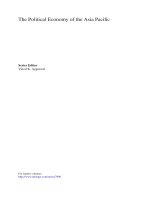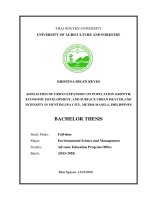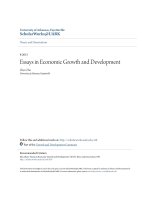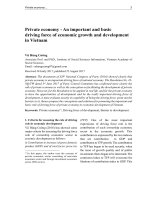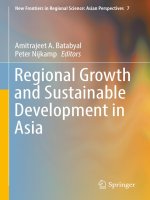Economic growth and economic development 719
Bạn đang xem bản rút gọn của tài liệu. Xem và tải ngay bản đầy đủ của tài liệu tại đây (68.62 KB, 1 trang )
References (highly incomplete)
Abramowitz, Moses (1957) “Resources an Output Trends in the United States
since 1870.” American Economic Review, 46, pp. 5-23.
Acemoglu, Daron (1998) “Why do New Technologies Complement Skills? Directed Technical Change and Wage Inequality.” Quarterly Journal of Economics,
113, pp. 1055-1090.
Acemoglu, Daron (2000) “Technical Change, Inequality and the Labor Market.”
Journal of Economic Literature, 40(1), 7-72.
Acemoglu, Daron (2002) “Directed Technical Change.” Review of Economic
Studies, 69, pp. 781-809.
Acemoglu, Daron (2003a) “Patterns of Skill Premia.” Review of Economic Studies, 70, pp. 199-230.
Acemoglu, Daron (2003b) “Labor- and Capital-Augmenting Technical Change.”
Journal of European Economic Association, 1, pp. 1-37.
Acemoglu, Daron and Josh Angrist (2000) “How Large are Human Capital Externalities? Evidence from Compulsory Schooling Laws.” NBER Macroeconomics
Annual 2000. MIT Press, Cambridge, pp. 9-59.
Acemoglu, Daron, Simon Johnson and James A. Robinson (2001) “The Colonial Origins of Comparative Development: An Empirical Investigation.” American
Economic Review, 91, pp. 1369-1401.
Acemoglu, Daron, Simon Johnson and James Robinson (2002) “Reversal of Fortune: Geography and Institutions in the Making of the Modern World Income Distribution.” Quarterly Journal of Economics, 117, pp. 1231-1294.
Acemoglu, Daron, Simon Johnson and James Robinson (2005) “Institutions as a
Fundamental Cause of Long-Run Growth.” in Philippe Aghion and Steven Durlauf
(editors) Handbook of Economic Growth, North Holland, Amsterdam, pp. 384-473.
831



